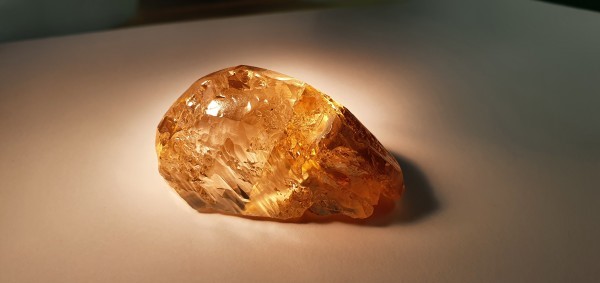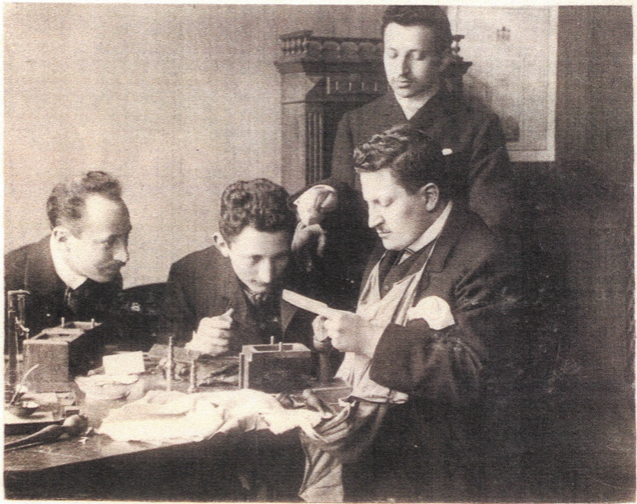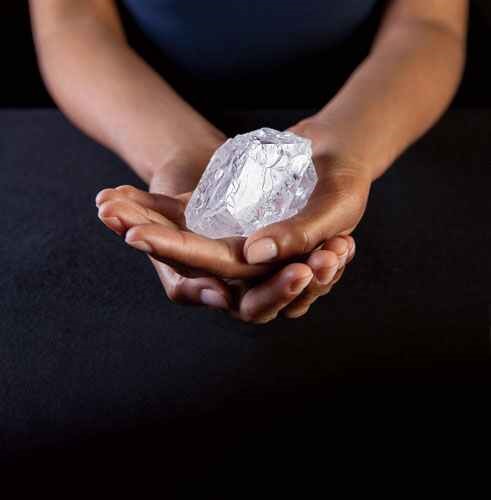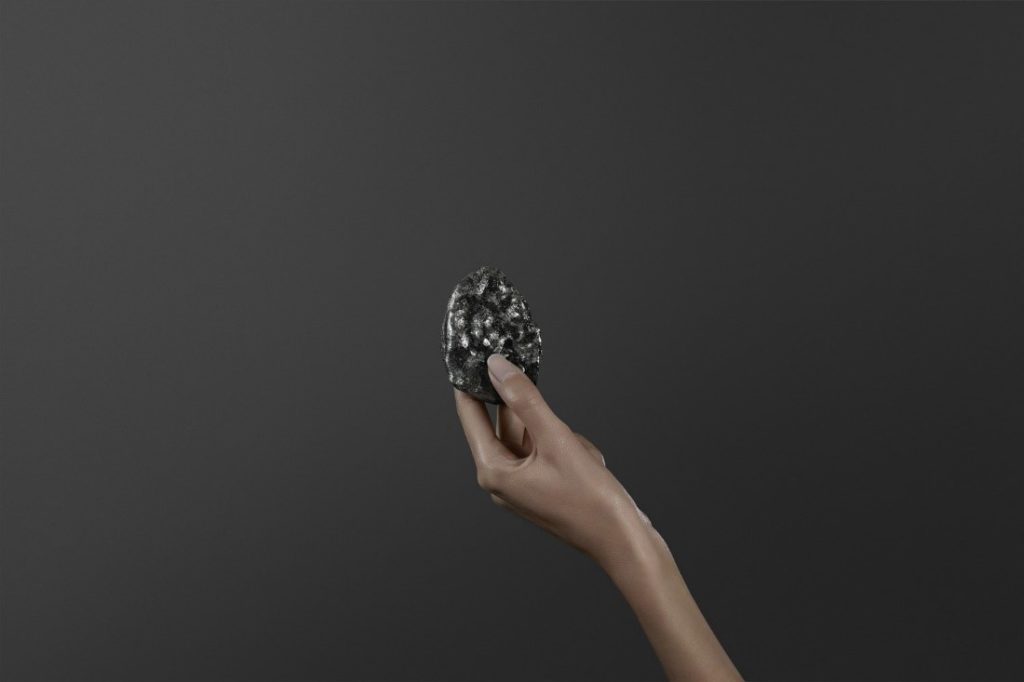One for the history books: ALROSA discovers Russia’s largest coloured diamond ever

Weighing in at an impressive 236-carats, the “intense yellow-brown” gem is the largest natural coloured diamond ever discovered in Russia. A combination of the stone’s rich amber hue along with its impressive size has been described by Pavel Vinikhin, head of Diamonds of ALROSA cutting and polishing division, as a “unique discovery”. The stone was unearthed at ALROSA’s Ebelyakh mine, located in the north-eastern region of Yakutia and is estimated to be 120 to 230 million years old. With measurements of 47x24x22mm, stone cutters everywhere will be eager to get their hands on the gem which, as Vinikhin says, has the potential to be cut into “several high-quality polished diamonds”.
The diamond is currently being assessed by ALROSA’s specialists before a decision will be made on its future. While we wait, let’s look back at some of the world’s largest diamonds ever found, and what became of them.

Excelsior diamond
On June 30, 1893, a chance discovery led to the unearthing of the largest diamond ever discovered at the time. Whilst loading a truck at the De Beers mine in Jagersfontein, Orange Free State, a worker happened to discover a 995-carat blue-white diamond. Due to a contract ending between the mining company and syndicate firms in London on the day of the stone’s discovery, there was little press coverage about the historical event. Buyers that did know about the stone were intimidated by its size, leading to the diamond sitting in a London vault for ten years. The diamond was finally cut by Asscher after a commission to fashion the stone into smaller jewels. Due to many black inclusions inside the stone, the cutting process proved difficult and led to a 63% wastage. While all 21 diamonds were expertly finished to Asscher’s high-standards, many believe that it would have been possible to have created a larger diamond compared to just 69.68-carats, the largest of the finished gems. Apart from three diamonds bought by Tiffany & Co.; the whereabouts of the remaining gems are largely unknown.

3. Lesedi La Rona
On the 16th November 2015, just four years after Lucara’s Karowe mine in Botswana began production, it became known for unearthing the largest gem-quality rough diamond “in over a century”. Up until 2019, the stone, which means “Our Light” in Botswana’s Tswana language, was the second largest diamond ever found. Measuring approximately 66.4x55x42mm, the 1,109-carat stone was described by the GIA (Gemmological Institute of America) as being of “exceptional quality and transparency”. The stone is believed to have been formed between 2.5 to 3 billion years ago, yet its discovery also made history as the largest stone recovered by Large Diamond Recovery (“LDR”) XRT machines as part of a modern approach to mining.
Despite Sotheby’s declaring the stone “the find of a lifetime”, the gem failed to sell at its first auction in 2016. The potential to “produce one of the largest top quality diamonds that has ever been cut and polished”, was realised a year later by Laurence Graff, chairman of Graff Diamonds, who privately bought the stone for £39.5 million.
Due to the its considerable size, a custom-built scanner had to be specifically made to explore imperfections within the stone. The entire process was a labour of love, taking Graff’s gemmologists 18 months to meticulously analyse, cut and polish the rough stone into a spectacular diamond. As a result of their dedication, alongside 66 “satellite” diamonds, Graff produced the world’s largest square emerald-cut and highest clarity diamond ever certified by the GIA.

2. Sewelô diamond
The gem responsible for overtaking the Lesedi La Rona as the second largest diamond ever found was the Sewelô diamond, unearthed in April 2019. Like its predecessor, the diamond was also discovered in Lucara’s Karowe mine in Botswana. The Sewelô diamond, meaning “rare find” in Setswana, measures 83x62x46mm and weighs an impressive 1,758 carats making it the largest ever discovered in Botswana. A thin carbon layer covers the exterior of the stone making it appear blackened and obscures the diamonds lustre. Those who have analysed the stone are expecting a “high-quality white gem” interior to be revealed once the cutting process begins, however; variations of colour and clarity within will remain a mystery until then. In January of this year, the “mesmerisingly mysterious” diamond was purchased by Louis Vuitton, who will be partnering with Lucara in an “unprecedented collaboration” to reveal the diamond’s potential. For the luxury fashion house, who are just beginning their foray into high jewellery, purchasing the world’s second largest diamond can be considered a bold move but, when talking to the Financial Times, Louis Vuitton CEO Michael Burke revealed it is part of their plan to become “one of the top five players” in the jewellery industry. Louis Vuitton plans to offer the opportunity to create bespoke, custom-cut diamonds, with 5% of all of the retail sales invested into Lucara’s community-based initiatives in Botswana.

1. Cullinan Diamond
For 115 years, the Cullinan diamond’s impressive weight of 3,106-carats has ensured its place as the world’s largest diamond ever discovered. The diamond was discovered on 26 January 1905, in a mine near Pretoria, South Africa. Alongside its remarkable size, the stone was also of exceptional clarity and an extraordinary blue-white colour making it a truly magnificent find. With the intent to repair the rift between Britain and South Africa, the stone was gifted to King Edward VII by the Government of the Transvaal. Just like the Excelsior diamond, the Cullinan was left in the capable hands of Joseph Asscher. Equipped with custom-made tools and feeling the weight of the world’s eyes upon him, it took a whole month just make a small incision into the diamond before splitting it in two. After eight months of three men working 14-hour days, nine large diamonds and 97 small brilliant gems were created. All of the large diamonds have become integral to the British Crown Jewels and Royal family’s jewellery collection. The largest of which is the Cullinan I – also known as the Great Star of Africa – which is a pear-shaped diamond, weighing 530.02-carats and is the main jewel within the English sceptre.
London DE offer a wide range of diamond engagement rings and jewellery. Get in touch with them today to arrange a free consultation and to find your perfect bespoke piece.
Visit their blog to explore similar articles.
By Holly Johnson


